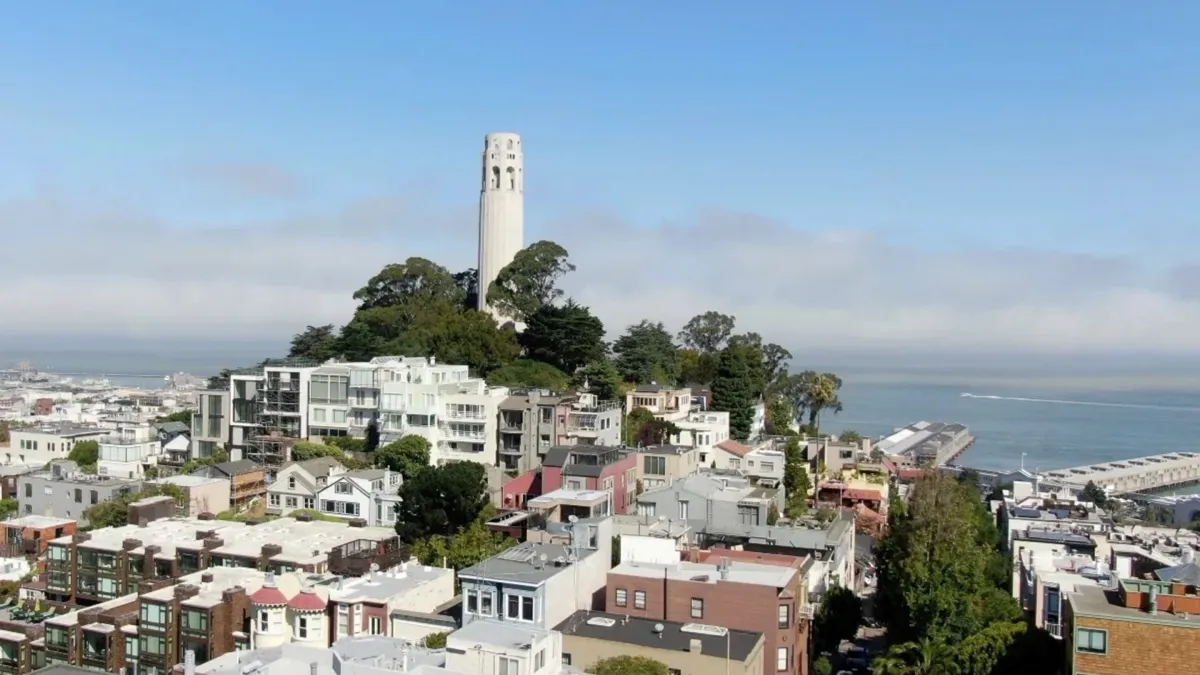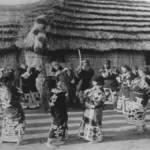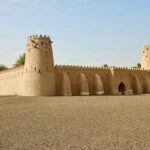Coit Tower rises unmistakably from the crest of Telegraph Hill, a clean white Art Deco cylinder standing against the winds that sweep across the San Francisco Bay. Built in 1933 and anchored in a neighborhood with roots stretching back to the city’s earliest maritime history, the tower answers two essential questions that many visitors bring with them: What is Coit Tower, and why does it hold such a powerful place in San Francisco’s visual and cultural landscape? The short answer emerges within the first hundred words: Coit Tower is a 210-foot monument funded by philanthropist Lillie Hitchcock Coit, built to beautify the city, and elevated further by a remarkable series of Depression-era murals and an observation deck offering sweeping views that define San Francisco itself. – coit tower telegraph hill san francisco.
But beneath this straightforward description lies a deeper story of civic generosity, artistic ambition, and the layered evolution of Telegraph Hill — from semaphore and telegraph signals to bohemian hideouts, working-class enclaves, and eventually a world-famous viewpoint. The hill, once known as Loma Alta, served as a lookout for incoming ships before becoming part of Pioneer Park. Today, its winding steps and narrow streets lead visitors to a tower that is both sculptural and historical, local and iconic.
This article draws from the narrative already built — the bequest, the architecture, the murals, the neighborhood, the hill’s layered history — to create a complete portrait of Coit Tower as a cultural landmark that continues to shape how San Francisco sees itself and how the world sees San Francisco.
Telegraph Hill: Where the City First Looked to the Sea
Telegraph Hill long predates the tower that crowns it. Initially called Loma Alta, it stood as one of the city’s earliest geographic markers — a hill close enough to the bay to offer sweeping views of incoming vessels. During the Gold Rush, a semaphore station was erected at its summit, its shifting wooden arms conveying news of arriving ships. That function — relaying messages before telegraph lines existed — gave the hill its enduring name.
By the mid-19th century, the semaphore was replaced by California’s earliest telegraph lines, but the hill remained a sentinel point between sea and settlement. Over time, the land at its crest became Pioneer Park, a public space gifted to the city. Meanwhile, the surrounding neighborhood grew into a patchwork of immigrant homes, working-class dwellings, bohemian enclaves, and eventually one of San Francisco’s most sought-after residential districts.
Thus when Coit Tower rose decades later, it stood atop a hill already steeped in communication, community, and civic history — a place where people observed the world, and where the world, in turn, watched the city grow. – coit tower telegraph hill san francisco.
Lillie Hitchcock Coit and the Gift That Became a Monument
When Lillie Hitchcock Coit died in 1929, she left a portion of her estate to San Francisco with a simple instruction: use it to beautify the city she loved. Coit, a colorful figure who famously supported volunteer firefighters, had long been a fixture in San Francisco’s public imagination. Some believed the tower built with her funds resembled a firehose nozzle, a romantic myth that continues to circulate despite architects never confirming such symbolism.
The city commissioned Arthur Brown Jr. and Henry Temple Howard to design the structure. Their Art Deco vision produced a tall, slender concrete cylinder — not ornamental, but elegant in restraint. Completed in 1933, the tower stood as a testament to civic pride during the depths of the Great Depression.
Rather than a monument to a single idea, Coit Tower became a gift to the entire skyline: a structure meant not to commemorate tragedy or triumph, but to offer beauty, perspective, and place. Through Coit’s bequest, a private devotion became a public anchor.
Art in a Time of Hardship: The Great Depression Murals
Inside the tower, the story deepens. More than two dozen murals, created under the Public Works of Art Project, transform Coit Tower from an architectural statement into a gallery of social history. Painted in rich fresco and tempera, the artworks depict life in 1930s California: farmworkers picking fruit, factory laborers at machines, scholars in libraries, commuters navigating city streets, and even political tensions simmering beneath everyday life.
These murals, vivid in color and bold in theme, reflect the struggles and aspirations of the Depression era. Their realism, sometimes critical and sometimes celebratory, broke from sanitized narratives and instead gave voice to workers, families, and communities. Women artists contributed significantly to the murals, an uncommon opportunity for the time, underscoring the project’s progressive spirit.
Over the decades, the murals became flashpoints of controversy and pride — censored briefly during a dock strike, then rediscovered as part of a vital national narrative of New Deal public art. Today, they stand as some of the most important examples of federally funded art from the early 20th century, their presence adding a surprising human dimension to a tower better known for its views.
Architecture on a Hill: Concrete, Cylinders, and Ambition
Coit Tower’s exterior appears deceptively simple — a single column of pale concrete rising above the city — but its structure is more complex. It consists of three concentric cylinders: an outer shell that forms the tower’s recognizable fluted surface; a middle cylinder housing a staircase; and a central shaft containing an elevator. This triple-layer construction gives the tower its structural resilience and its clean, vertical aesthetic. – coit tower telegraph hill san francisco.
The Art Deco style manifests in its geometry: strong, vertical lines, minimal ornamentation, and a modernist restraint fitting the industrial era of the 1930s. Reinforced concrete, still gaining architectural prominence at the time, allowed for sleek walls and minimal joints.
This architecture, ambitious for its time, was not meant to shout but to stand. On a hill already steep and dramatic, the architects chose elegance in simplicity: a column that would complement the city’s natural topography rather than compete with it. The result is a structure that feels inevitable — almost as if it grew out of the hill itself.
What the Tower Sees: A Panoramic Geography of San Francisco
The observation deck is Coit Tower’s most celebrated attraction. From this vantage point, the entire geography of San Francisco unfolds: the curves of Lombard Street, the sweep of Russian Hill, the downtown skyline rising in glass and steel, and the blue waters of the Bay dotted with ferries.
To the north lies Alcatraz, stark and solitary; to the west, the Golden Gate Bridge spans the mouth of the Pacific. The Bay Bridge stretches eastward toward Oakland, linking two cities across a metallic arc. Angel Island, Treasure Island, and the city’s eastern waterfront spread wide below.
This vantage point provides more than a photogenic moment — it grants a sense of place. From the deck, visitors understand the city as a peninsula shaped by wind, water, and steep urban grids. It is this all-embracing panorama that has made Coit Tower not just a viewpoint, but a defining lens through which people encounter San Francisco.
Telegraph Hill: A Neighborhood Around a Landmark
The streets surrounding Coit Tower are among the most distinctive in San Francisco: narrow alleys, wooden houses, lush gardens, and stairways winding up the hillside. These steps — famously steep and sometimes adorned with wild parrots — are daily paths for residents who live between the city’s history and its modern demands.
Telegraph Hill has evolved from working-class housing to bohemian refuge to a blend of artists, longtime residents, and newer arrivals. Throughout these cycles of change, Coit Tower has remained a constant presence — a daily landmark glimpsed through bay windows or rising behind treetops.
For residents, the tower is not merely an attraction but a neighbor: familiar, reassuring, symbolic. It creates a visual anchor that ties personal histories to the broader identity of the city.
Preservation, Debate, and the Meaning of Memory
No landmark survives nearly a century without facing challenges. Coit Tower’s concrete structure required maintenance, especially after decades of coastal fog and wind. Its murals were restored multiple times to preserve their colors and integrity. On occasion, political tensions or cultural disagreements have sparked debate over how the murals should be displayed.
Yet each controversy reaffirmed the tower’s importance. Preservation efforts underscored that Coit Tower is more than a tourist stop — it is a vessel of memory, carrying stories of labor, art, architecture, philanthropy, and civic identity. As the city grew upward and outward, the tower remained grounded in its role as a bridge between generations.
Coit Tower at a Glance
| Feature | Detail |
|---|---|
| Height | 210 feet |
| Built | 1932–1933 |
| Location | Pioneer Park, Telegraph Hill |
| Architects | Arthur Brown Jr. & Henry Temple Howard |
| Style | Art Deco |
| Interior | 1930s murals under Public Works of Art Project |
| Surroundings | Residential neighborhood, narrow streets, historic steps |
Timeline of Telegraph Hill and Coit Tower
| Period | Event |
|---|---|
| Early 1800s | Hill known as Loma Alta |
| 1849 | Marine semaphore installed; name becomes Telegraph Hill |
| 1853 | Telegraph lines replace semaphore |
| Late 1800s | Hilltop gifted to city as Pioneer Park |
| 1929 | Lillie Coit’s bequest |
| 1932–1933 | Coit Tower constructed |
| 1934 | Murals completed |
| Late 20th century | Restorations and preservation efforts |
| Today | Global landmark and cultural icon |
Why Coit Tower Matters
Coit Tower endures because it embodies multiple layers of meaning: a philanthropic gift turned public monument; a Depression-era canvas filled with working-class narratives; an architectural expression of Art Deco restraint; a neighborhood anchor; and a panoramic viewpoint.
It is a testament to how a single structure can transcend its practical purpose to become a storyteller — interpreting the city’s past, framing its present, and offering perspectives both literal and metaphorical. The tower links personal memories, local heritage, and citywide identity in a way few landmarks manage.
Takeaways
- Coit Tower was funded by Lillie Hitchcock Coit to beautify San Francisco.
- The Art Deco design by Arthur Brown Jr. and Henry Temple Howard reflects minimalist elegance.
- New Deal murals inside the tower capture 1930s California life with striking realism.
- Telegraph Hill’s maritime and cultural history enriches the tower’s significance.
- The observation deck offers unmatched panoramic views of the San Francisco Bay Area.
- The tower remains both a neighborhood anchor and a global emblem of the city.
Conclusion
Coit Tower stands as a graceful intersection of architecture, history, and civic spirit. From the outside, its clean vertical lines seem almost effortless; from the inside, its murals reveal the weight of the era that shaped them. From the top, the city stretches outward into water, hills, and horizon, offering a vantage that clarifies both geography and identity.
In a city known for reinvention, Coit Tower represents continuity. It rises from Telegraph Hill as a testament to generosity and artistry, to resilience and beauty. Visitors come to see its views; locals live under its presence. Together, they affirm what the tower symbolizes: that a city’s landmarks are not merely structures, but reflections of the people and stories that shape them.
FAQs
How tall is Coit Tower?
It stands 210 feet tall atop Telegraph Hill, giving it one of the city’s highest natural vantage points.
Can you visit the murals inside the tower?
Yes. They are accessible on the ground floor and showcase 1930s California life.
What style is Coit Tower built in?
It is designed in the Art Deco architectural style, characterized by clean lines and minimalist form.
What can you see from the observation deck?
Sweeping views of San Francisco’s skyline, bridges, bay, and surrounding hills.
How do you get to Coit Tower?
Reach it via steep neighborhood steps, scenic paths, or the local bus route that stops at the base.
References
- Cherny, R. W. (2007). The Coit Tower Murals: New Deal Art and Political Controversy in San Francisco. (State Historic Preservation Office form). National Register of Historic Places registration form: Coit Memorial Tower. Retrieved from https://npgallery.nps.gov/AssetDetail/NRIS/07001468
- San Francisco Recreation & Parks Department. (n.d.). Coit Tower facility details. Retrieved from https://sfrecpark.org/facilities/facility/details/Coit-Tower-290
- Pioneer Park San Francisco. (n.d.). Pioneer Park / Coit Tower / Marconi. San Francisco Parks Alliance. Retrieved from https://www.sfparksalliance.org/our-parks/parks/pioneer-park-coit-towermarconi
- “Coit Tower.” (n.d.). In Wikipedia. Retrieved from https://en.wikipedia.org/wiki/Coit_Tower
- “Telegraph Hill, San Francisco.” (n.d.). In Wikipedia. Retrieved from https://en.wikipedia.org/wiki/Telegraph_Hill%2C_San_Francisco
- Public Works of Art Project. (n.d.). In Wikipedia. Retrieved from https://en.wikipedia.org/wiki/Public_Works_of_Art_Project











